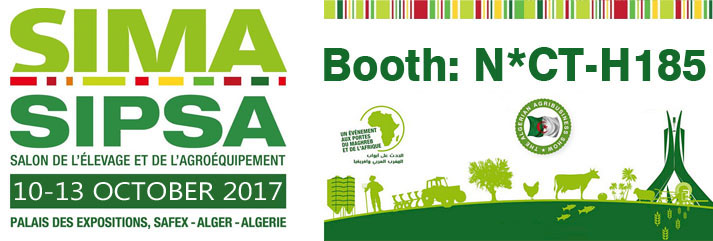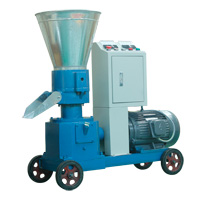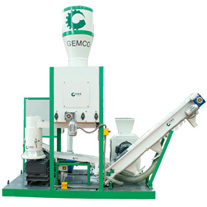

3 Typical Pellet Feed Mildew Phenomena Analysis and Solution
As the feed industry competition increases daily, the feed pellet is stored for a loner time. Feed mildew becomes one of the main problem perplexing feed production in summertime. Mildew reduces the feed nutrition value and influences palatability. What’s more, it causes mycotoxin of feed product exceeds the standard, harms the animal health, thus harming the human feed safety. In order to avoid this problem, many manufacturers took series of measures, and got certain results. However, the mildew problem is cause by many factors, so, during the entire logistics process from the inspection of raw materials to the storage of the finished feed to the breeding site, mildew may occur as long as inadequate anti-mildew measures are taken.
- Single pellet mildew with high quantity. A part of or full bag of pellet feed are single pellet mildew with high quality. Sometimes, some small mildewed single pellet stick together, smells bad caused by the high temperature of the inner bag.
- Clumps mildew. The clumps mildew usually happens in the seaming place of the pellet feed bag, and there are usually several in a bag of feed. Sometimes, some single feed pellet mildew around the clumps mildew.
- Lumpy mildew. The sunny side of the bag of feed pellet which is placed in the top of the storage stack have lumpy mildew, having a large number. Around them are some single pellet feed mildew.
This paper is to analyze these three mildew phenomena from the following three aspects including production, storage, transportation step, summarizing the close relationship between pellet feed mildew and pellet feed cooling, storing and transportation.
Usually, the moisture content f the final pellet feed is not over the requirement, after analyzing and summarizing, the conclusion is obtained.
Causes of single pellet feed mildew with large number
Eliminating the operation problems (top and tail material are not discharged) and steam system problem (like vapor instability or failure of hydrophobic equipment), under the condition of final pellet moisture content not exceeding bid, the main reason why the single pellet feed mildew happen is that pellet feed in cooling tower is not sufficiently cooled. Because the pellet feed is not sufficiently cooled, when the pellet feed leaves from the cooling tower, the pellet surface with high temperature is contact with the low-temperature air, the temperature difference causes the hot air emitted from the pellets to condense on the pellet surface, causing the moisture on the pellet feed surface to rise (meaning that the temperature of the pellet feed surface is higher than that of the average pellet temperature, exceeding the requirement). The larger the temperature difference between the hot pellet feed and outer air, the higher the pellet feed surface moisture content. Thus the high moisture content pellet stick together to form into small lumps. After a period of time, under the effect of mildew, the feed pellet with high moisture content surface start to heat and get mildew, smelling mildew. So, as the temperature increases fast, the pellet feed gets mildew faster.
Causes of clumps mildew in the stitching thread
Generally, the clumps mildew is caused by the rain drench or getting seriously damped.
- Rain drench
- Affected by damp seriously
Causes of lumpy mildew
In strongly sunny weather, the pellet feed stacked in the top is in the sunny side (in the transportation vehicle). Under the shinning of strong sunlight, the moist inside the pellet is evaporated due to the high temperature, forming into spray in the pellet surface. Especially, when the sun-heated pellet feed enters a low-temperature environment (daytime at night or transportation materials unloaded indoors), the hot and cold air comes into contact with the inner film, and the temperature difference causes the hot air in the bag to condense, forming water mist, water mist Will stick directly to the feed, causing local pellet feed to increase moisture. After a period of time, the high-moisture feed becomes hot, and then loose and moldy feed. In severe cases, excessive water mist will form into water droplets, which stick the surrounding pellets together to form a block, then forming lumpy moldy pellet feed.
We have made an experiment about if sun exposure causes local particle corpus moisture to increase or not.
We take a basically sealed bag of feed pellet with weight of 700g and moisture content of 11.5%. At 16:00 in the afternoon (when the temperature outdoor is 37℃), we out the feed pellet in the sunset for basking. When the spray happens, we take the feed pellet inside (the indoor temperature is 25℃) , at this time, the spray increases.
We take a basically sealed bag of feed pellet with weight of 700g and moisture content of 11.5%. At 16:00 in the afternoon (when the temperature outdoor is 37℃), we out the feed pellet in the sunset for basking. When the spray happens, we take the feed pellet inside (the indoor temperature is 25℃) , at this time, the spray increases.
- Causes analysis:
- Solving method:
- Adjust the cooling tower leveler to a reasonable height.
- Adjust the cooling tower distributor and unloader to maintain the basic level of the material layer in the cooling tower.
- Equip appropriate specifications of cooling towers, cooling fans and reasonable control of fan damper size.
- Protect from rain, water and moisture.
- Store the feed pellet in a ventilated, dry and clean place.
- Mainly, the stored feed products should not be exposed to the sun.
- In addition, the vehicle transports the bagged feed in high temperature and strong sunshine, especially when the transportation distance is relatively long, it needs to be covered with tarpaulin for shading and heat insulation.
Categories







